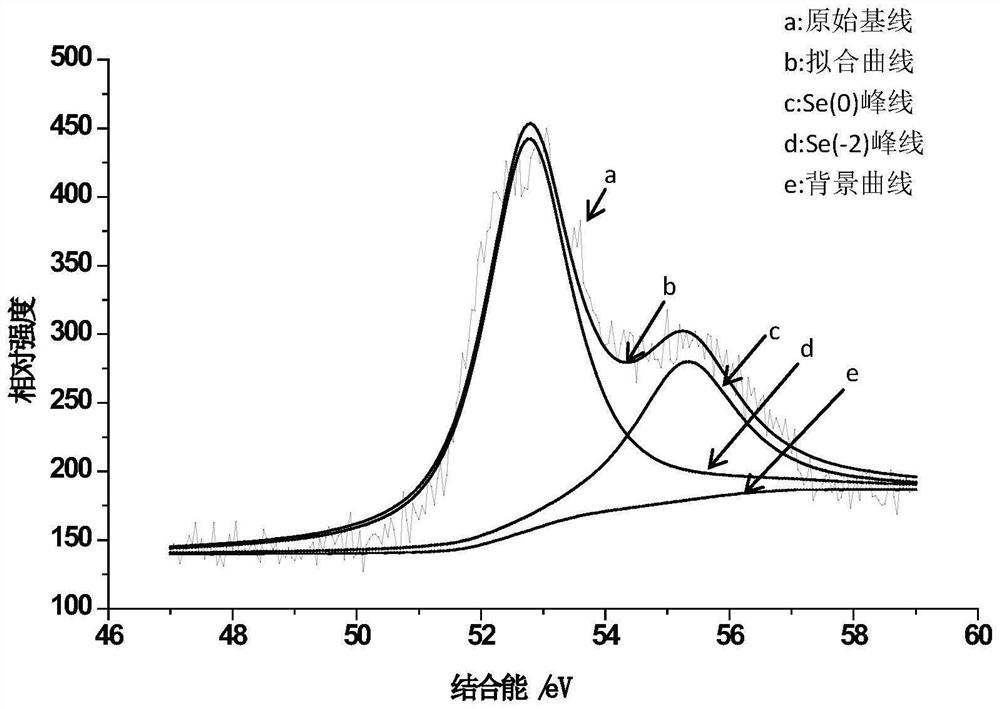Recombinant saccharomyces cerevisiae engineering bacteria and application thereof in synthesis of nano-selenium
A technology for recombining Saccharomyces cerevisiae and Saccharomyces cerevisiae, which is applied in application, genetic engineering, fermentation and other directions, can solve the problems of difficulty in separation and purification of synthetic nano-selenium, and achieve the effects of reducing costs, increasing yield, and simplifying separation and purification steps.
- Summary
- Abstract
- Description
- Claims
- Application Information
AI Technical Summary
Problems solved by technology
Method used
Image
Examples
Embodiment 1
[0045] Embodiment 1, the screening of sodium selenite high transformation efficiency bacterial strain
[0046] 1. Preparation of fermentation broth
[0047] Eleven strains of Saccharomyces cerevisiae purchased from China Industrial Microbiology Culture Collection Center (CICC) preserved in the laboratory at -80°C were inoculated into YPD solid medium, and activated at 30°C for 24 hours to obtain activated strains. Pick a ring of activated strains in YPD liquid medium, shake culture at 30°C for 15 hours, and use it as seed solution. The seed solution was inoculated into the YPD liquid medium of 30mL with the inoculation amount of volume concentration 10%, after cultivating for 24h at 30°C, adding sodium selenite (Na 2 SeO 3 , Sodium selenite was first dissolved in water to make 10000mg / L aqueous solution, and then added after filtering with a filter membrane with a pore size of 0.22 μm), and oscillated on a reciprocating shaker at 30°C for 48h to obtain fermentation broths of...
Embodiment 2
[0060] Embodiment 2, utilize TEM electron microscope, SEM electron microscope and XPS bionano elemental selenium to carry out characterization
[0061] 1. Fermentation of strains
[0062] The 1406 strain of Saccharomyces cerevisiae screened in Example 1 was inoculated into YPD solid medium, and cultured at 30° C. for 24 hours for activation to obtain activated strains. Pick a ring of activated strains in YPD liquid medium, shake culture at 30°C for 15 hours, and use it as seed solution. The seed solution was inoculated into the YPD liquid medium of 30mL with the inoculation amount of volume concentration 10%, after cultivating for 24h at 30°C, adding sodium selenite (Na 2 SeO 3 , sodium selenite was first dissolved in water to make a 10000mg / L aqueous solution, and then added after filtering through a filter membrane with a pore size of 0.22μm), and oscillated on a reciprocating shaker at 30°C for 48h to obtain 39mL of fermentation broth.
[0063] 2. Scanning electron microsc...
Embodiment 3
[0074] Example 3. Modification of vesicle transport pathway
[0075] 1. Construction and transformation of gRNA plasmid for CRISPR-Cas9 system
[0076] (1) Strain p426_Cas9_gRNA-Hyg
[0077] Using the plasmid p426_Cas9_gRNA-HIS3b (Addgene, No. 87402) as a template, primers P1 / P2 were used to amplify the p426_Cas9_gRNA-HIS3b vector fragment (denoted as fragment 1) without the URA3 fragment.
[0078] Using the plasmid pRS41H (EUROSCARF, Germany) as a template, the hygromycin hyg resistance gene was amplified using primers P3 / P4 (the nucleotide sequence is shown in SEQ ID NO: 6, which is denoted as fragment 2). Fragment 1 and Fragment 2 were incubated using a one-step cloning kit, and then transformed into Escherichia coli DH5α competent. Positive transformants were selected and verified by colony PCR using primers P5 / P6, and the obtained strain was designated as p426_Cas9_gRNA-Hyg.
[0079] (2) Strain p426_Cas9_gRNA-Hyg-YPRC
[0080] Utilize chopchop website, design target s...
PUM
| Property | Measurement | Unit |
|---|---|---|
| size | aaaaa | aaaaa |
| particle diameter | aaaaa | aaaaa |
| particle size | aaaaa | aaaaa |
Abstract
Description
Claims
Application Information
 Login to View More
Login to View More - R&D
- Intellectual Property
- Life Sciences
- Materials
- Tech Scout
- Unparalleled Data Quality
- Higher Quality Content
- 60% Fewer Hallucinations
Browse by: Latest US Patents, China's latest patents, Technical Efficacy Thesaurus, Application Domain, Technology Topic, Popular Technical Reports.
© 2025 PatSnap. All rights reserved.Legal|Privacy policy|Modern Slavery Act Transparency Statement|Sitemap|About US| Contact US: help@patsnap.com



